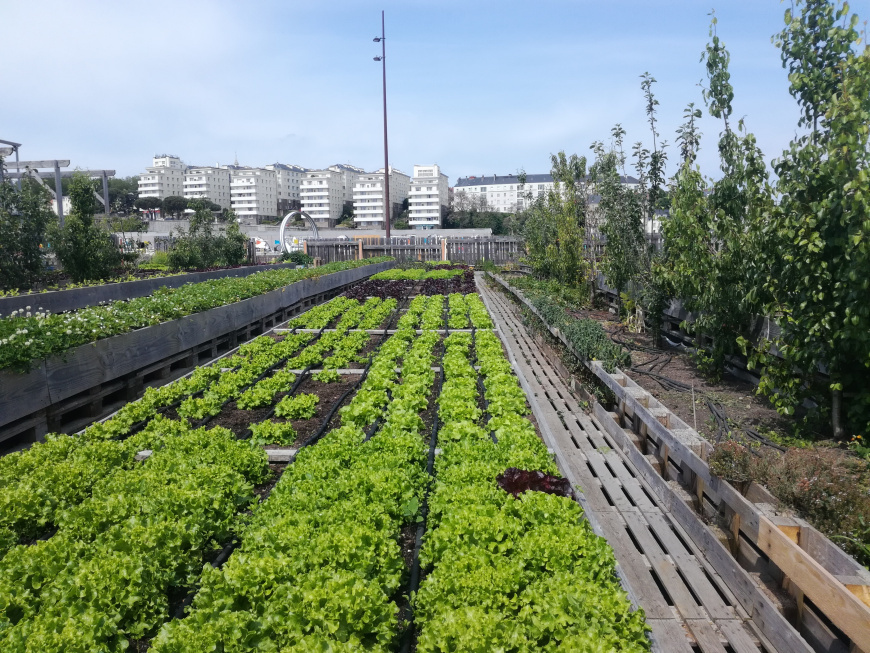Some Ideas on City Blooming You Need To Know
Some Ideas on City Blooming You Need To Know
Blog Article
The Ultimate Guide To City Blooming
Table of ContentsCity Blooming Things To Know Before You Get ThisThe Definitive Guide to City BloomingFascination About City BloomingHow City Blooming can Save You Time, Stress, and Money.Not known Incorrect Statements About City Blooming
Intrigued in growing food for sale in the City of Chicago? Below is a list of frequently asked concerns relating to the policies and policies that cultivators ought to take into consideration when intending an urban farming task.
The zoning amendment does not change any type of other codes dealing with composting, structure authorizations, acquiring or leasing City owned building, service licenses or environmental contamination. There are existing codes that control these problems and they remain in full impact and may apply to your task. Neighborhood gardens are usually owned or managed by public entities, civic organizations or community-based organizations and maintained by volunteers.
Urban ranches grow food that is planned to be offered, either on a nonprofit or for-profit basis. As a result of their commercial objective, metropolitan ranches require a service license. Yes. An area yard is allowed to market surplus produce that was expanded on website if the sales are accessory or subordinate to the garden's key purpose defined above.
All About City Blooming
The quantity of compost product can not go beyond 25 cubic lawns at any type of offered time according to the criteria in 7-28-715 of the City's Municipal Code. Due to the fact that the dirt at a lot of new garden websites requires amending, garden compost, soil, timber chips, or other materials can be gotten to create or improve the growing area.

If a structure license is called for after that the hoophouse will certainly be considered an accessory building. You can find out more regarding the building permit demands by speaking to the Division of Buildings. The 25,000-square-foot size restriction is planned to avoid a single community yard from controling a given block or diminishing the block's existing household or commercial personality.
The limitation does not use to yards situated in Public Open Room (POS) districts. Can there be more than one community yard that is 25,000 square feet on a solitary block? Fencing is not required, nonetheless, yards that have huge parking locations might be needed to mount fence or various other landscape design functions.
Not known Facts About City Blooming
B1 & B2 districts call for that all business usage activities be carried out indoors. Is secure fencing required for city ranches? Fencings might be called for, along with landscape design and screening, for certain parking areas and outdoor work or storage locations depending on location and the particular activity taking location.
Urban ranches call for structure authorizations and zoning authorizations prior to building and construction (indoor plants). Various other kinds of city review may be needed depending on specific structures, activities, size, landscaping, licensing, public heath and stormwater monitoring problems.
The Department of Organization Affairs and Customer Protection can aid figure out the specific kind of organization permit that's required. Off road car park is required for the majority of industrial jobs in Chicago. The called for number of car parking rooms is based on the number of workers working on site and not the square video footage of the growing room.
The City Blooming Ideas

Yes. A city farm can market garden compost product generated on site, nonetheless, the operation should comply with the laws in 7-28-715 of the Chicago Municipal Code. Yes. Aquaponic systems are permitted inside on metropolitan ranches in numerous zoning districts. A zoning evaluation and building authorization is needed in order to set up frameworks or systems and an organization permit is called for as explained above.
As much as 5 hives or nests of honey bees may be maintained as an accessory usage. However, beekeepers must sign up with the Illinois Department of Farming. For additional information about the suggested zoning modification you may call the Division of Real Estate and Economic Development, Bureau of Planning and Zoning at 312.744.8563.
Farming in cities and city areas An urban farm in Chicago. Urban agriculture refers to various techniques of growing. https://giphy.com/channel/cityblooming, processing, and dispersing food in city locations. The term also puts on the location tasks of pet husbandry, tank farming, beekeeping, and horticulture in a metropolitan context. Urban farming is differentiated from peri-urban agriculture, which takes place in backwoods beside suburbs.
10 Simple Techniques For City Blooming
It can involve an activity of organic growers, "foodies" and "locavores", who seek to hop over to these guys create socials media established on a shared principles of nature and community holism. These networks can create using official institutional assistance, coming to be integrated into neighborhood town as a "change town" motion for sustainable metropolitan development.
In either instance, the much more direct accessibility to fresh veggie, fruit, and meat products that may be realised via urban agriculture can enhance food safety and security and food safety and security while reducing food miles, leading to reduced greenhouse gas emissions, thus adding to climate adjustment reduction. A few of the very first proof of city agriculture comes from Mesopotamia.
Report this page